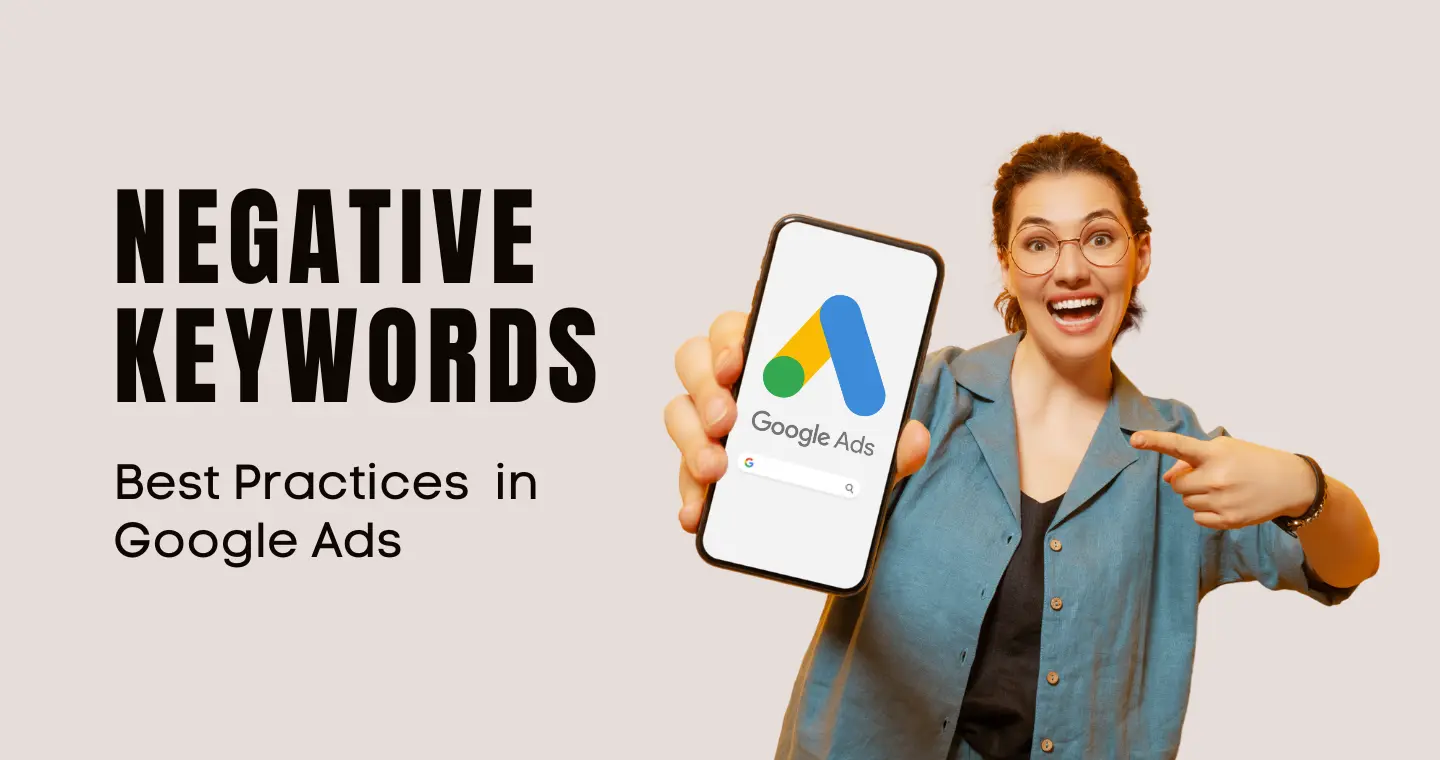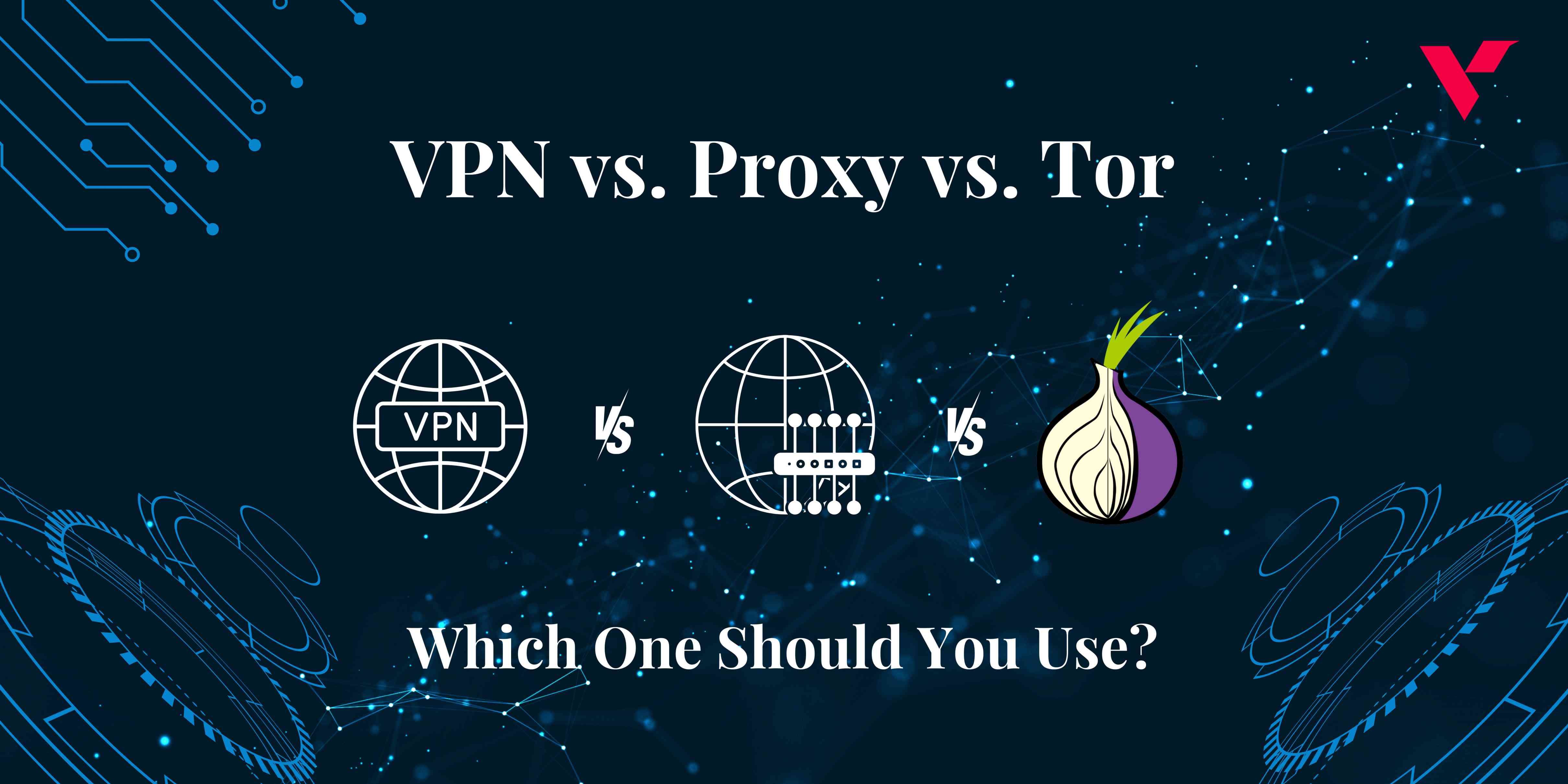Popular Tools by VOCSO
A negative keyword is a type of keyword that prevents your ad from being triggered by a certain word or phrase. The importance of paid ads is to increase your sales. It is therefore important to refine the keywords that you are bidding on, thereby maximizing relevance for an impressive return on investment.
Negative keywords ensure that you can filter out your ads from showing people who search or browse any content related to those words. Negative keywords, therefore, ensure that your ads will only reach the relevant and potential audience at all times.
Just like keywords you mostly bid on, negative keywords can be assigned to the account, campaign, or ad group level. They usually come in multiple flavors such as broad, phrase, and exact. It is important to understand how negative keywords match types work for you to maximize, their value in your ad accounts such as Google Ads and Microsoft Advertising (Bing).
By using negative keywords for your ad campaigns on Google you can see a huge difference in your PPC advertising cost. In this blog, we’ll explore everything about negative keywords in Google Ads.
Table of Contents
Examples of negative keyword match types
The negative broad match is one example of a negative keyword match. In this category, keywords are matched to multiple variations of a phrase. For example, the negative broad match keyword “running shoes” would filter out queries that show the entire negative keyword even when the words are not in the same order.
It is important to note that, this does not eliminate all relevant search queries. You will still be able to find some queries with some terms still present in your negative keyword match phrase. This shows us that the negative keyword match is less restrictive but can restrict search that has the exact phrase you have specified.
The exact negative keyword match helps you in eliminating specific search queries. This means by adding them to your Gooogle Ads accounts, your ad won’t show only when the searcher enters the exact words you have specified.
It is important to note that in Display Network and Youtube, all negative keywords are considered as an exact match. Again adding too many negative keywords may at times, adversely impact your ability to reach prospects while a well-curated list will save you tons of money.
What are the advantages of adding negative keywords?
The question now is what is the advantage of using negative keywords in my ads campaigns? Here are the advantages of using negative keywords
1. They improve click-through rate
Proper use of negative keywords ensures that you restrict your ads from running on irrelevant queries. This minimizes exposure of your account to uninterested impressions. This acts to your advantage by increasing the percentage of people who click on your ads.
2. It helps you create more relevant ad groups
Weeding out ads that are not relevant to your business increases the relevance of your ad groups. This eventually allows you to create a single message that will speak to the entire group of keywords.
3. It is money-saving
Negative keywords help you in saving money as it ensures you are paying for relevant clicks only. This also helps you avoid bidding against yourself.
4. It raises your conversion rate
Negative keywords ensure that your ads will not be triggered by particular terms that you are sure won’t convert and all those that convey a total lack of commercial intent.
5. Better ad performance tracking
Negative keywords enable you to achieve better ad performance tracking. By excluding irrelevant search terms, you can gather more accurate data and gain valuable insights into the performance of your ads. Let’s say you run a luxury shoe store and use “high-end shoes” as one of your main keywords. However, you notice that your ads are also appearing for searches like “cheap shoes” or “affordable footwear.” By adding “cheap” and “affordable” as negative keywords, you can filter out these unrelated queries.
Consequently, the data you collect will be more precise and reflective of the performance of your ads for relevant, high-value searches. Armed with this accurate information, you can make informed decisions to optimize your campaigns, allocate your resources effectively, and focus on the search terms that truly drive results.
6. Enhanced ad ranking
Secondly, utilizing negative keywords contributes to enhanced ad ranking. Google’s ad ranking algorithm takes into consideration the quality and relevance of your ads. By leveraging negative keywords, you refine your targeting and ensure that your ads are shown to the most relevant audience. Let’s continue with the luxury shoe store example. If you use “luxury shoes” as a keyword, but your ads are being triggered by searches like “running shoes” or “sports shoes,” the relevance of your ads may be diminished.
By adding “running” and “sports” as negative keywords, you ensure that your ads are displayed to individuals specifically interested in luxury shoes. This targeted approach can positively impact your ad ranking, increasing the likelihood of your ads appearing in higher positions on the search engine results page (SERP). As a result, your ads are more likely to be seen by your target audience, leading to increased visibility and potential conversions.
Incorporating negative keywords allows for more accurate ad performance tracking and enhanced ad ranking. By excluding irrelevant search terms, you obtain precise data to optimize your campaigns effectively. Additionally, refining your targeting through negative keywords improves the relevance of your ads, positively influencing your ad ranking and increasing the visibility of your ads to the most relevant audience. By leveraging these advantages, you can maximize the effectiveness of your Google Ads campaigns and drive better results for your business.
How do you add negative keywords?
The most disturbing question to everyone who wants to implement broad and phrase keywords in their account is the procedure to follow in adding them to your account. For a long time, discovering negative keywords have been considered a laborious process that involves brainstorming and or, poring through Google Ads search queries.
Follow these steps to apply negative keywords to your campaigns:
Step 1. In your Google Ads account, click on the campaign for that you want to add negative keywords.
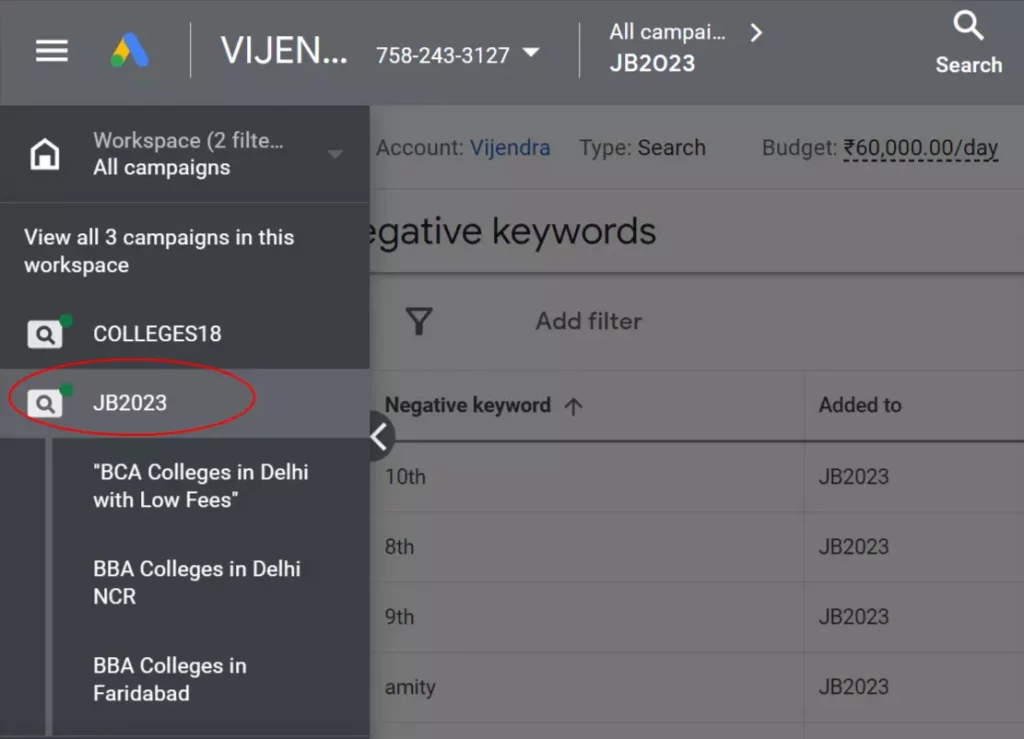
Step 2. Click on the “Keywords” and then “Negative Keywords” option in the left section menu
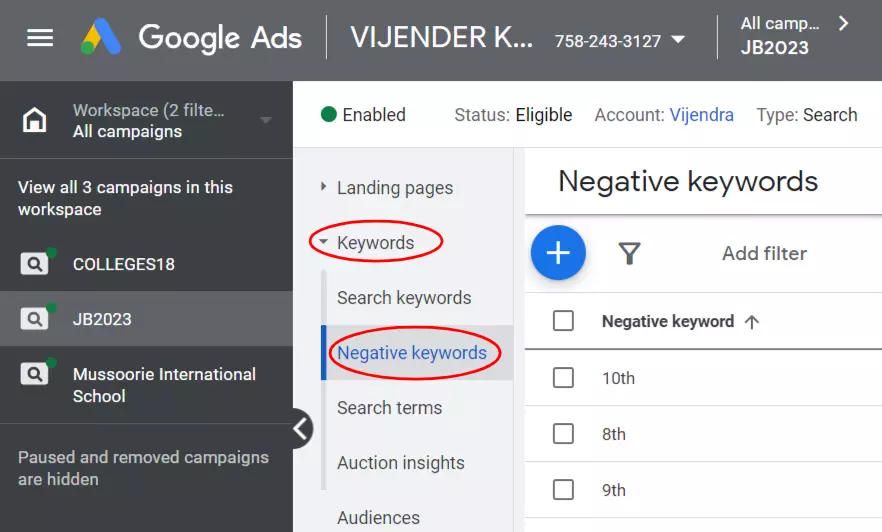
Step 3. Click on the + button to add negative keywords or create a new list
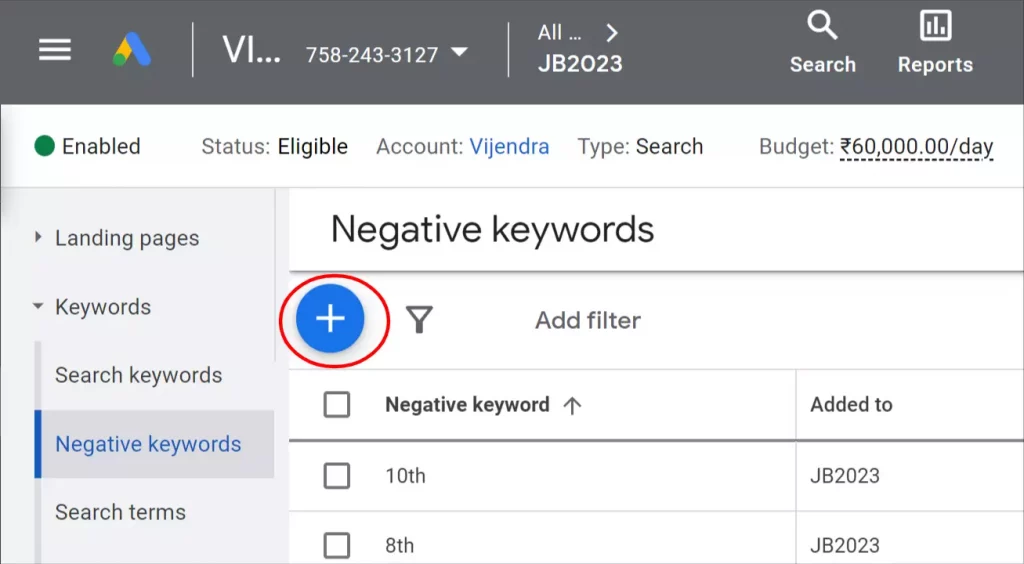
Step 4. Select the campaign or ad group level to apply the negative keyword

Step 5. Add your negative keywords per line and click to Save.
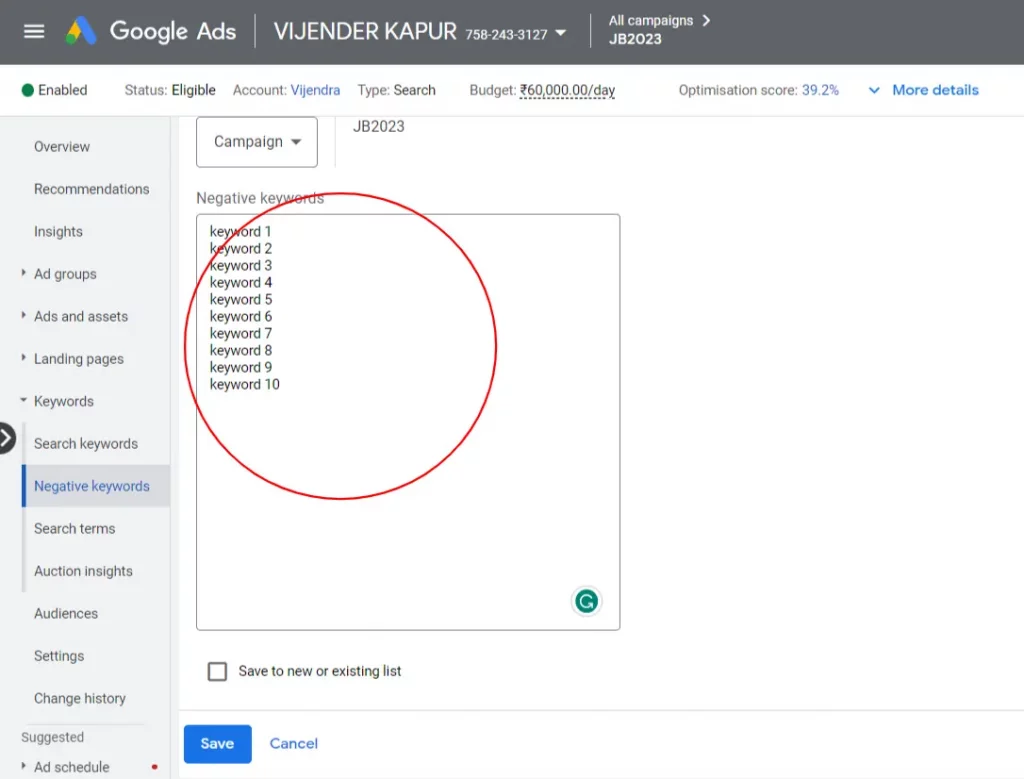
How to create a new negative keywords list
Step 1. Click on the “Keywords” and then “Negative Keywords” option in the left section menu.
Step 2. Click on the + button to add negative keywords or create a new list
Step 3. Add your negative keywords per line to create your list
Step 4. Check the box
Step 5. Name your list and click on the Save button
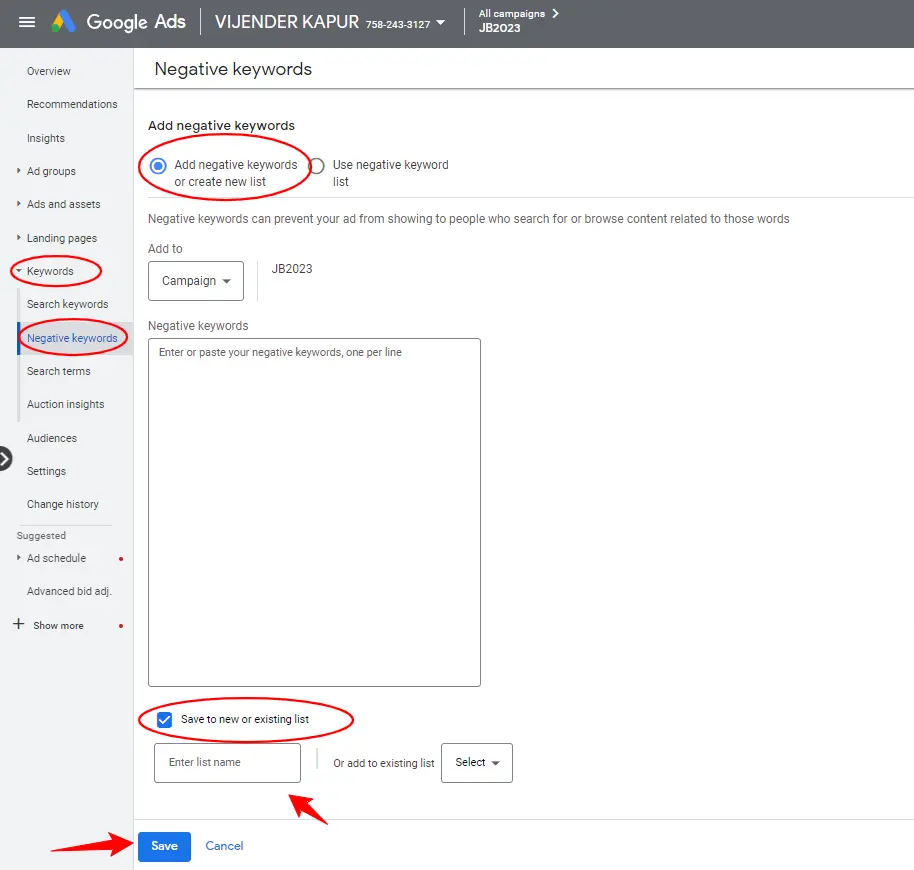
How to add a new negative keyword list to your campaigns
- On the user interface go to your campaign
- Jump over to the keywords tab
- Go to the negative keywords interface
- While on the keyword interface select use keyword list
- Select the appropriate list and save and your list goes live

Add any ad poaching search queries that you directly find to your negative keyword lists. Now you are set to go and Google will serve your ads to the right search queries.
For tighter control, it is advisable to apply the same concept to the ad group level.
How to find negative keywords for your Google Ads by using the search terms report
Now you have ideas about how to add negative keywords and lists to your Google Ads campaigns. But now the question is how to find negative keywords or words for your ad campaigns. Don’t worry. You can find negative keywords in your Google Ads account by simply using the search terms report. Follow these steps:
- In your Google Ads account, click the Campaigns
- Select your campaign
- Click on “Keywords” and then “Search terms”
- Analyze the irrelevant search terms that people are using to find your ads.
- Select all irrelevant keywords and mark them as negative keywords.

Techniques to uncover costly negatives
It is important to conduct a service-level analysis to uncover costly negatives. However, in most cases, you end up missing some negatives that would adversely affect your ad performance.
Here are techniques you should employ to uncover costly negatives:
1. Employ advanced negative search query mining
Bidding on broad-match keywords with the intention of maximizing your impression volume while ignoring your search queries is a waste of money. It is important to manage your negative keywords in line with new opportunities that will result in overlooking costly search queries that may be torpedoing your ability to convert valuable searchers into customers.
2. Figuring out search queries to be negated
It is important to note that keywords are not searched queries. They are just assumptions of what we think that the customer will enter into the search engine
A search query is the real entity input into the search engine. one keyword can match up to hundreds of search queries. This a fantastic opportunity but has the negative effect of overspending on inevitable search queries.
How to identify the right keywords at scale?
To deduce whether a certain keyword needs to be included in a negative keyword list we need to ask ourselves these questions;
- Does the search query have a below-average CTR?
- Does it have a below-average conversion rate?
- Does it have an above-average cost per conversion?
When a search query has a below-average CTR, it means that searchers who see the ad triggered are not clicking it. If that search query is irrelevant to your business, then you should consider listing it as a negative keyword. If it relates to your products and has volumes then you should consider creating a new ad group for it.
When a search query has a below-average conversion rate or above-average CPA. Then it, means that your landing page is not optimized for mobile or lacks the adequate paths to conversions. queries that don’t convert should not be triggering your ads.
To address the issues brought about by answers to these questions you will require to master the use of filters.
How do I use filters?
I know that is a pertinent question in your mind right now.
- Navigate to the search Terms interface and click the small funnel
- Then type the name of the parameters you would like to filter or pick them from a pick list
- Ensure you have enabled the columns you need for you to view the metrics you are filtering
- Click on the three vertical bars
This will prompt you to establish parameters using greater than, lesser than, and or equal to alongside an open field.
It is important to note that you can layer filters to find queries that exist at the intersection of specific metrics.
Successful campaigns that have used negative keywords to save on millions
Carrie Albright once shared her thoughts on using negative keywords and gives us an example of one client who was to save 1 million pounds by simply using negative keywords.
With the use of proper Negative keywords management, the client was able to increase their CTR rate by 132 percent, there was a decrease in the conversion rate of 8%. This resulted in a cut in the average cost per lead of 50 %. This means that the cost per lead increased by 53 % while the average cost per lead was at 47 % of the previous average.
This eventually allowed the client to save $ 1 million on overpriced leads. This enabled them to budget and invest in top-performing campaigns and keywords.
This shows us how it is important to do thorough negative keyword management to save you money and increase your ad campaign performance.
How to manage negative keywords
It is important to note that your negative keywords are serving you the purpose you intend to achieve. The goals that you must achieve in negative management are as follows:
1. Reduce irrelevant traffic:
For example, if you are a plumbing business in Las Vegas, you will make sure you negate that keyword that will never be converted to a business such as; plumbing business school Las Vegas or plumbing certification. Negating such phrases in your ad campaign will result in you paying for clicks that are not related to your business in any way.
2. The second goal you want to achieve is a higher-value result:
A keen use of negative keywords will ensure your campaign is focused on the business’s more profitable products. The plumber will require to use negative keywords such as; fix., leak, leaking, fixing, and repair to weed out traffic from users with small issues thereby focusing his budget on jobs with a higher return on investment such as designing and installation of a water system in the new building.
How then are you going to achieve these goals? When you apply the following tactics to manage your negative keywords I am pretty sure you are going to get impressive results.
3. Continuous review:
During the first few months of your campaign, ensure you conduct weekly search term reports, then a monthly analysis. In so doing you will be able to ascertain which queries are generating a lot of traffic and identify those that don’t make sense to your campaign.
4. Use Google suggested searches:
Conduct a search query using one of your keywords to discover what other searches Google suggests for it. This will help you in identifying words you would want to eliminate in your campaigns. Once you have identified them, add them to your negative keywords and repeat with other keywords.
Always remember to include universal negatives in your negative keyword lists.
5. Include relevance:
This helps in eliminating search queries with close variants from your campaign. This ensures that your campaign reaches only the relevant customers who will require your services.
6. Put the focus on your core business:
It is important to put focus on what you do. This will help you in finding the relevant keywords that you should negate in your ad campaign. For example, if you are in a service industry should focus on having product-related terms as your negative keywords.
7. Avoid conflicts:
An example of conflict is where you have let’s say the term veterinary service as your keyword then you end up adding service to your negative keywords list. This will mean in short you are blocking traffic that needs for your campaign. Though you are doing this unintentionally, this is one factor that will affect your campaign performance adversely. Gooogle Ads alert campaign managers whenever there is a conflict in keywords for them to act appropriately.
It is important to set up ad groups for different match types. Upon doing this, use negative keywords to ensure there is no internal competition within a campaign. This is done by adding exact match keywords as negatives to the phrase match and broad match campaigns, then adding phrase match keywords as negatives to the broad match campaign. This will boost the quality of scores in each group thereby lowering the CPP.
Disadvantages of negative keywords
1. Intimidation by negative match types
A large number of PPC advertisers don’t understand the concept of the three-match types. This makes it difficult for them to implement
Secondly, negative keywords unlike traditional match types, are not extended to synonyms or different variations of keywords. This puts off a lot of PPC advertisers as they consider it a tedious process to set up multiple variations of their negative keywords.
The process of setting up negative keywords lists involves in-depth research which most advertisers abhor.
In most cases, advertisers are so much inclined to set up keywords based on obvious terms. The negative keyword setup involves a lot of sacrifices and critical thinking. It takes time and it sometimes requires input from different people to achieve the intended list.
Conclusion
If you are running an advertising campaign it is very vital to invest in tools that will help you generate and set up Negative keywords that will make sure that you are getting the maximum return on investment. The creation of a negative keywords list should be done in a very organized manner for you to avoid the most common mistake in their creation. It is important to invest heavily in researching the most appropriate negative keywords for your specific ad campaigns.
Having the best negative keyword lists will ensure you increase your profits dramatically within a very short time period. Will ensure all your ads will never be shown for keyword search queries that are not relevant to your target market. Over 50 % of your click-through will have a high potential of converting into sales
Your ad’s overall CTR will be higher meaning you will have reached a considerable number of audiences as more people who see your ad will click on it as it is always relevant to them.
The higher the CTR in your ad the lower the Cost per Click regardless of whether your ad is positioned higher on the page.
A lower CPC rate translates to a huge saving on the cost of running your ads effectively. This will eventually result in a higher return on investment.
It also will help you greatly in gaining a better knowledge of the keywords that you should use in your web content.
Negative keyword management, however, laborious it is should be an important component to each and every person who is running a PPC business. Conducting in-depth research on negative keywords continuously will help you in improving the performance of your business. It will also help you in saving time whenever you want to generate a new negative keywords list or create new Ad groups.
One way that most companies have not utilized fully in generating negative keywords that you can use in your ad campaigns, is the use of your team members to discuss the possible erroneous questions that they are probably getting from customers about your business products or services. The most relevant team that you should consider engaging would be the customer support team as they handle most of your product and service queries from a customer on a daily basis.
While choosing your keywords always remember to take caution to avoid overdoing it. Continuous review or the performance of your negative keywords will help you develop a thoroughbred list of keywords that have the greatest potential in your ad campaigns.
Having effective negative keyword management not only keeps your keyword research clean but also relevant. Having this ensures that you are capable to deliver a compelling and targeted message to the exact segment of searchers you want to reach. It also ensures that your budget will be used on impressions and clicks that are likely to generate relevant traffic. As a result of this, there will be an increase in leads and eventually be converted into sales.
For a Pay per Click account to succeed it is therefore important to have an effective negative keyword strategy. It is one of the most important cornerstones if and only if it is implemented correctly. It will save you money, increase the relevance of your audience, and improve your click-through rates.it is evident no matter how the process of having an effective Negative key management strategy, is demanding and laborious, its return on investment is quite impressive. You just need to be more focused, and dedicated, and consider the broad involvement of various key players in the industry to have it up and running for your benefit.
If you wanna make that extra money on PPC and save on expenses while enjoying increased profits, then it is the right time to go negative and maximize your return on investment tremendously.


